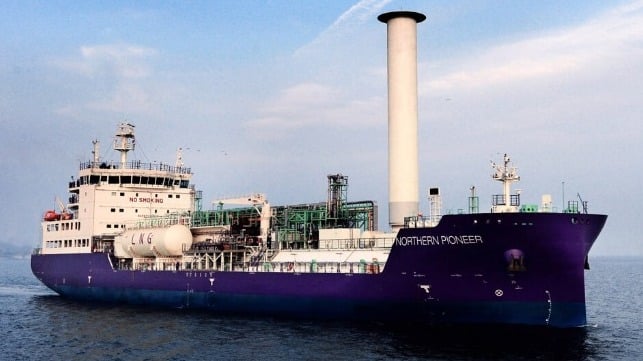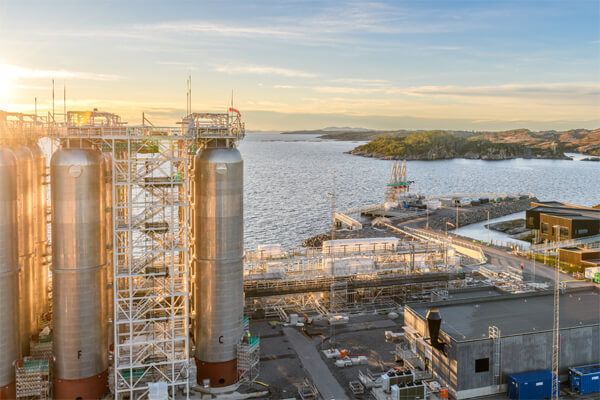First Liquid CO2 Carrier for CCS Ready for Delivery in China

Ceremonies in China last week marked the completion of the world’s first liquified CO2 carrier for a carbon capture and storage operation. The vessel named Northern Pioneer is the first of four being built for a CCS operation set to launch in Norway and receive its first captured CO2 in 2025.
The unique vessel was built by the Dalian Shipbuilding Industry (DSIC) in China for Northern Lights, a partnership owned by Equinor, TotalEnergies, and Shell. The group ordered the first two vessels in 2021, added a third order in 2023, and agreed to a charter with Bernhard Schulte which ordered the fourth vessel at the end of 2023. Construction began in late 2022 and assembly in 2023 with the vessels to be managed by Japan’s Kawasaki Kisen Kaisha (“K” Line).
The Northern Pioneer is 8,000 dwt and has a carrying capacity of 7,500 cbm of CO2 transported at a maximum 19 bar(g) pressure and minimum -35°C temperature. The group has entered into an agreement with Orsted to store 430,000 tonnes of biogenic CO2 emissions per year from two power plants in Denmark starting in 2026. It also has contracted with Yara International providing transport and storage as part of the Norwegian company’s ambition to capture and store 800,000 tonnes CO2 from the ammonia production for its facility in Sluiskil, the Netherlands, from 2026.

The Northern Lights onshore facilities that will receive CO2. (Photo: Svein Ove Søreide courtesy of Northern Lights)
Northern Lights highlights these agreements as the first cross-border CO2 capture and storage efforts. The company has built a CO2 receiving facility in Øygarden, Norway. Work was completed on the facility in September 2024. The CO2 with be received from the emitters at the plant and pumped offshore for storage under the North Sea.
The vessels are each approximately 427 feet (130 meters) in length. They are fueled primarily by LNG and to improve performance they are fitted with a wind rotor and air lubrication on the hull. They are registered in Norway. Sea trials were completed at the end of October and the ship will depart shortly for the trip to Norway. Her sister ship Northern Pathfinder will follow early in 2025.
Phase one of the project was projected with a storage capacity of up to 1.5 million tonnes of CO2 per year.
